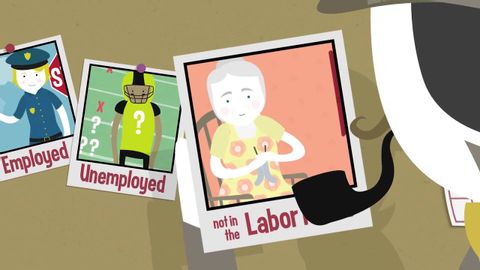
Subtitles & vocabulary
The Fed Explained: Labor force and unemployment
00
Huang LuLu posted on 2015/09/13Save
Video vocabulary
people
US /ˈpipəl/
・
UK /'pi:pl/
- Noun (Countable/Uncountable)
- Persons sharing culture, country, background, etc.
- Men, Women, Children
- Transitive Verb
- To populate; to fill with people.
A1
More job
US /dʒɑ:b/
・
UK /dʒɒb/
- Noun (Countable/Uncountable)
- Something that must be done
- Regular work at which you earn money
A1
More learn
US /lɚn/
・
UK /lɜ:n/
- Verb (Transitive/Intransitive)
- To get knowledge or skills by study or experience
- To find out something.
A1
More Use Energy
Unlock All Vocabulary
Unlock pronunciation, explanations, and filters
